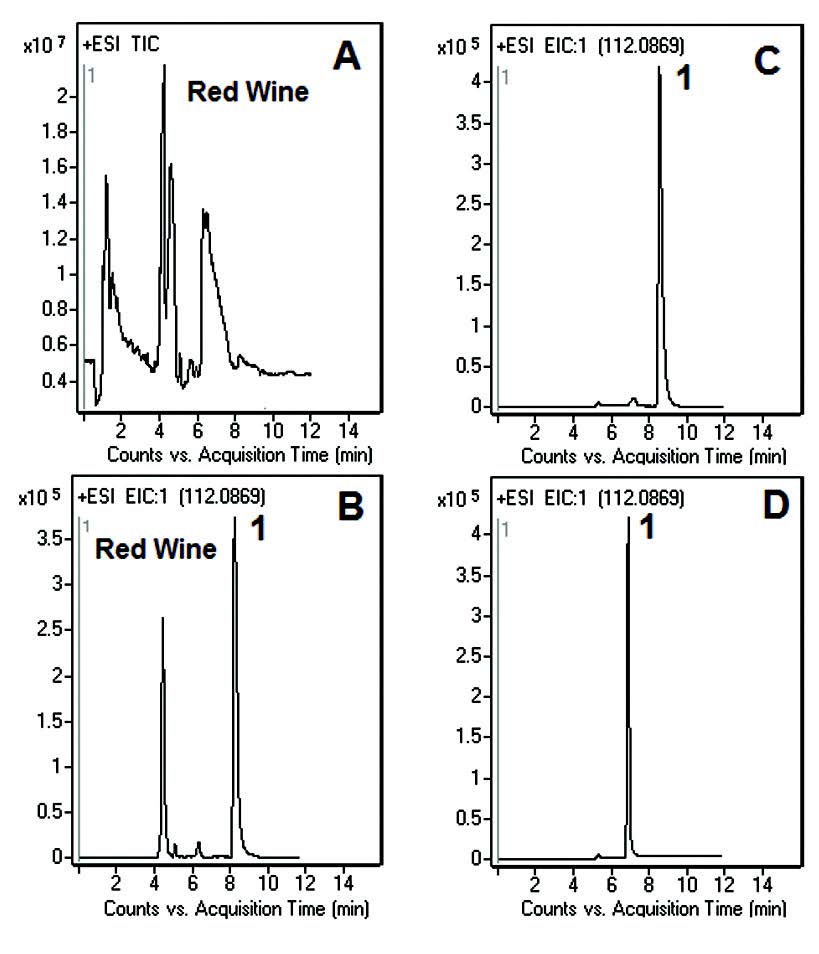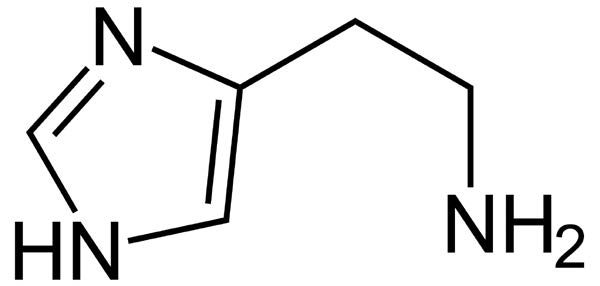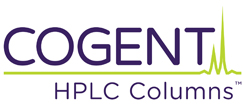Use Isopropyl Alcohol for Improved Peak Shape of Histamine
This Method for Red Wine Analysis is simple, fast, robust and does not require derivatization like many other HPLC Methods. When Isopropanol (IPA) was not used in the A Solvent, the Histamine Peak was highly Symmetrical in the standard (Compare Figure C and D) but distorted in the Red Wine extract due to matrix effects. Addition of 50% of IPA to Solvent A greatly improved Peak Shape for the Analysis of actual Wine samples (Fig. B).
Please note that Histamine retention increased when IPA was in Solvent A, since DI Water is the strongest solvent and substituting it for IPA reduces eluting power of the Mobile Phase.


Peak:
Histamine 112.0869 m/z+
Method Conditions
Column: Cogent Diamond Hydride™, 4μm, 100Å
Catalog No.: 70000-15P-2
Dimensions: 2.1 x 150mm
Mobile Phase:
—A: 50:50 DI Water / IPA with 0.1% Formic Acid (Figures A-C)
—A: DI Water with 0.1% Formic Acid (Figure D)
—B: Acetonitrile with 0.1% Formic Acid (All Figures)
Gradient:
| Time (minutes) | %B |
| 0 | 80 |
| 5 | 10 |
| 7 | 10 |
| 8 | 80 |
Post Time: 5 minutes
Injection vol.: 1μL
Flow rate: 0.4mL / minute
Detection: ESI – POS – Agilent 6210 MSD TOF Mass Spectrometer
Sample Preparation:
—Figure A: Old Red Wine, TIC.
—Figure B: Old Red Wine, EIC (112.0869 m/z). Extra peak is likely an isomer of Histamine
—Figure C: Histamine Dihydrochloride standard, EIC (112.0869 m/z). 50% IPA in Solvent A
—Figure D: Histamine Dihydrochloride standard, EIC (112.0869 m/z). No IPA in Solvent A
—- Old Red Wine Sample: Filtered with 0.45μm Nylon Syringe Filter (MicroSolv Tech Corp.) and diluted 1:5 with 50:50 solvent A:B mixture.
—- Standard Sample: 1mg / mL Histamine Dihydrochloride stock solution in 80:20 DI Water / MeOH diluted 1:100 with 50:50 Solvent A / Solvent B diluent.
t0: 0.9 minutes
Note: Histamine is known for its role in allergic response. Release of Histamine plays a role in inflammation, gastric acid secretion, microcirculation and neurotransmission in mammalian brains. Measurement of Histamine levels in body fluids has been used in clinical analysis in various diseases such as preeclampsia, asthma, cancer, mastocytosis and in the progression of periodontitis. Histamine is also present in many foods and beverages, especially red wine and spoiled food. Ingesting Histamine can cause migraines, sweating and nausea.
Attachment
No 160 Histamine in Red Wine IPA Modifier pdf 0.4 Mb Download File


